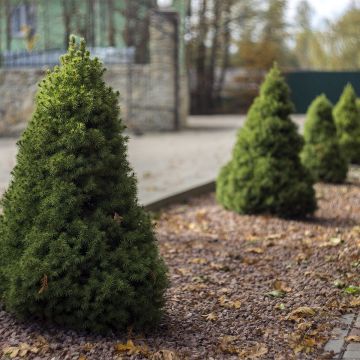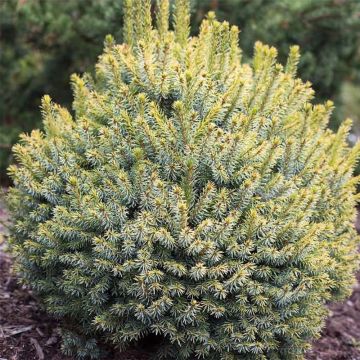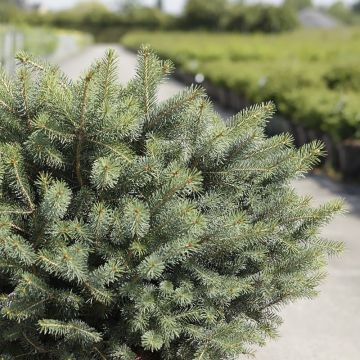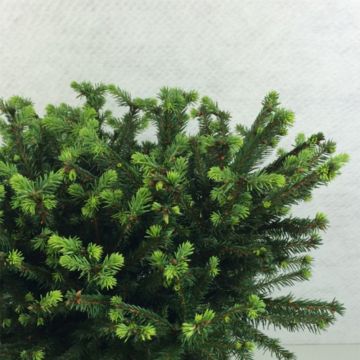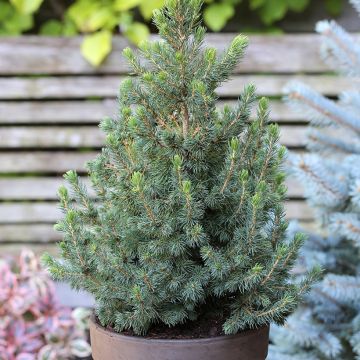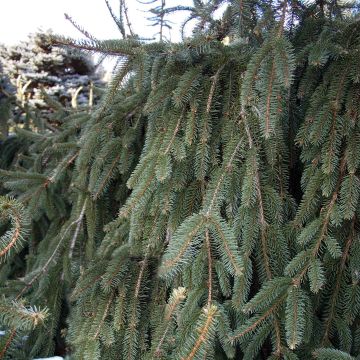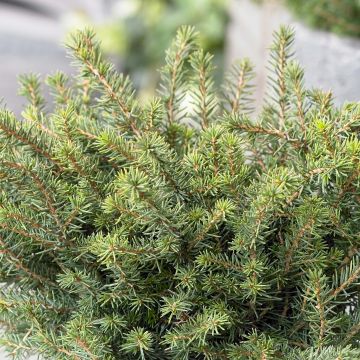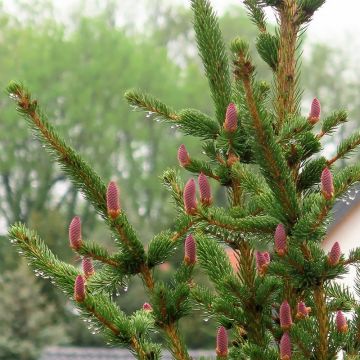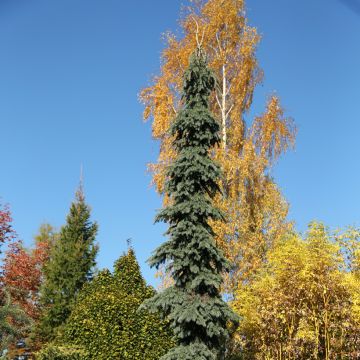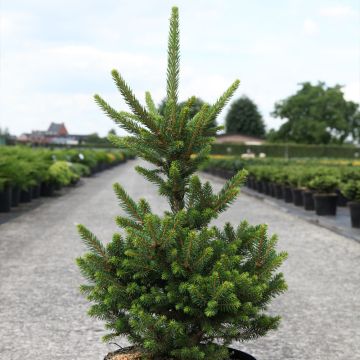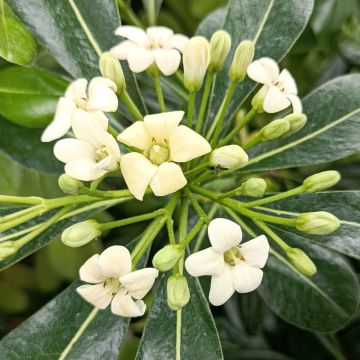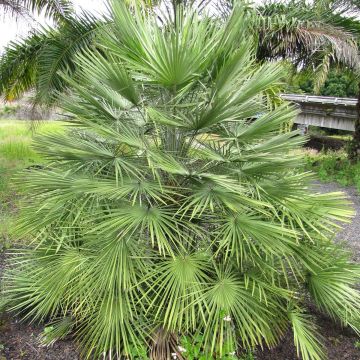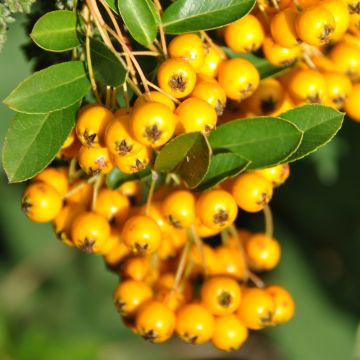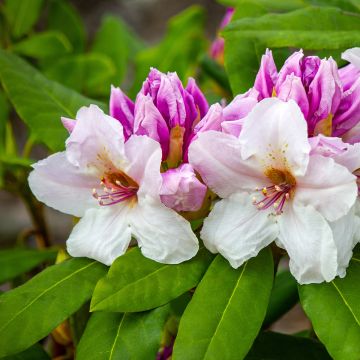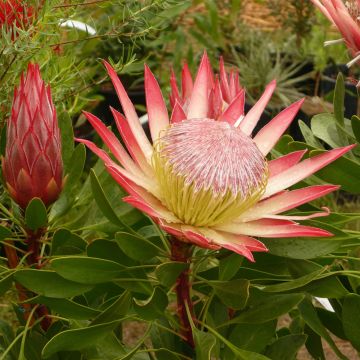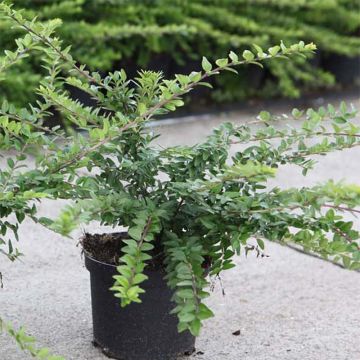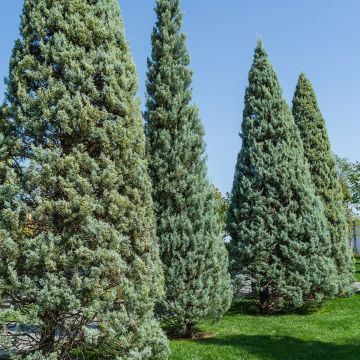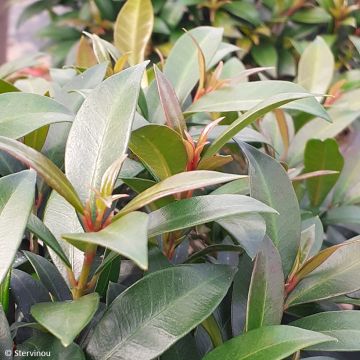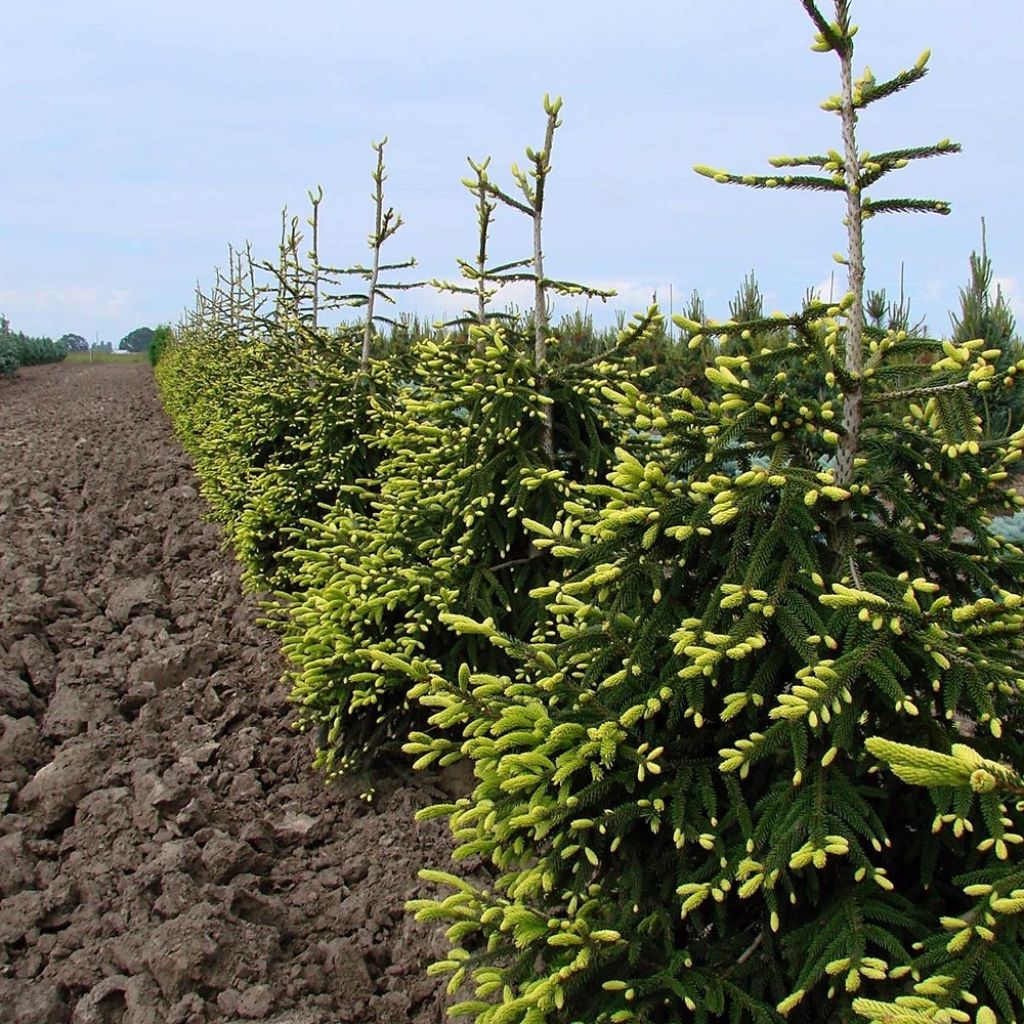

Picea orientalis Aureospicata - Caucasian Spruce
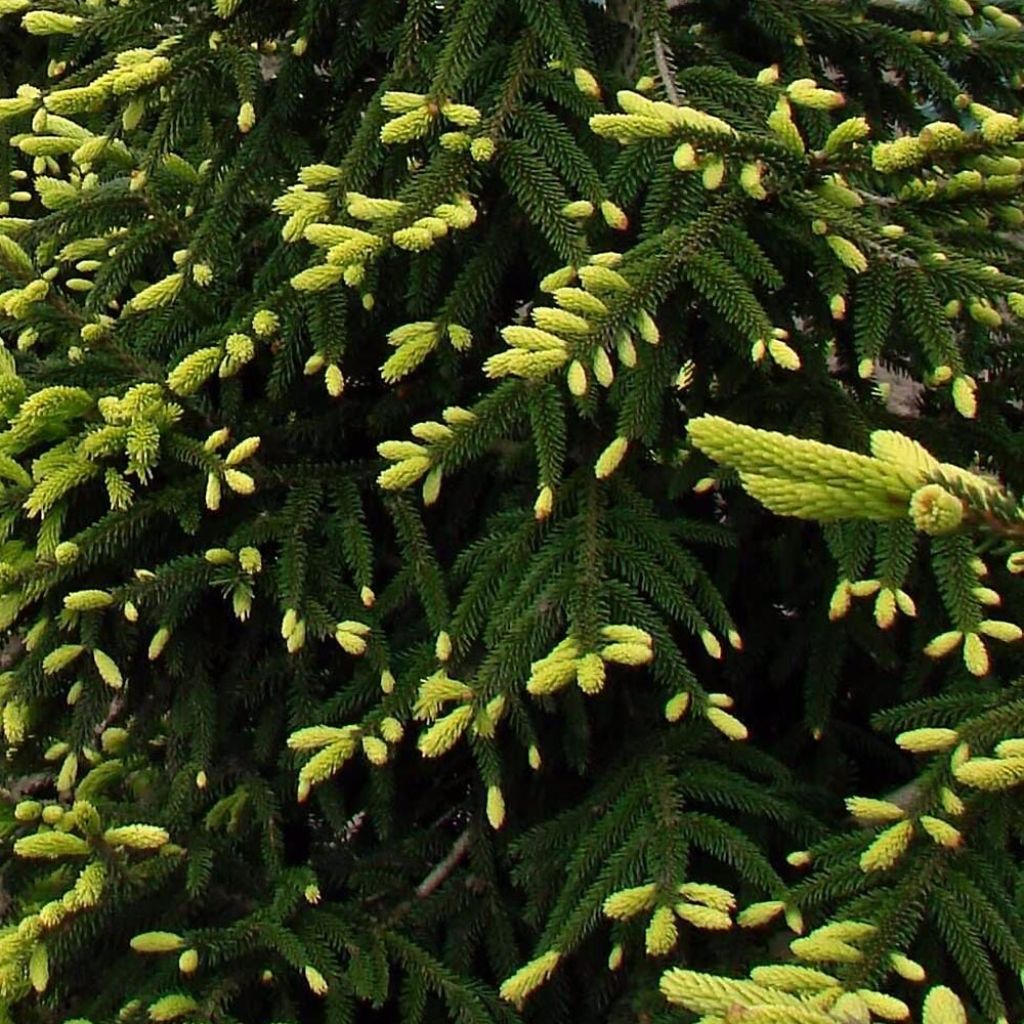

Picea orientalis Aureospicata - Caucasian Spruce
Picea orientalis Aureospicata - Caucasian Spruce
Picea orientalis Aureospicata
Caucasian Spruce, Oriental Spruce
This item cannot be shipped to the selected country
Delivery charge from €5.90
More information
Schedule delivery date,
and select date in basket
This plant carries a 24 months recovery warranty
More information
We guarantee the quality of our plants for a full growing cycle, and will replace at our expense any plant that fails to recover under normal climatic and planting conditions.
From €5.90 for pickup delivery and €6.90 for home delivery
Express home delivery from €8.90.
Does this plant fit my garden?
Set up your Plantfit profile →
Description
Picea orientalis 'Aureospicata', also known as 'Aurea', is a conifer that forms a subject of moderate size, particularly remarkable in spring when the tips of the dark green branches are adorned with golden yellow shoots, offering an invigorating contrast. The needles turn bronze green in autumn. The Oriental spruce also charms us with its very regular pyramid-shaped habit evolving into a wide column and its dense dark green needles applied against the branch. This cultivar does not exceed 10 to 12m (33 to 39ft) at maturity. Plant it in the sun in poor soil, but one that retains moisture, avoiding limestone, polluted areas, and dry climates.
Picea orientalis, also called Oriental spruce, is an evergreen conifer of the Pinaceae family, native to northeastern Turkey and the Caucasus. In its natural environment, this large pyramidal tree reaching 30m (98ft) in height grows well both on the humus-rich soil of mixed or evergreen forests and on the rocky slopes of the Black Sea coast.
'Aureospicata' is a cultivar derived from this species that is distinguished by the golden brightness of its young shoots, but with a more moderate growth. When young, its habit forms a very regular cone that widens while retaining its arrow with age. Its growth is slow, reaching a height of 2 to 3m (7 to 10ft) in 10 years instead of 4 to 5m (13 to 16ft) for the type in 10 years, and it will become a bush of 10 to 12m (33 to 39ft) at maturity. In spring, it produces very dense young shoots, golden yellow in colour, which form a wonderful combination with the old dark green foliage. Its branches are covered with very short needles, which have a diamond-shaped section. They are shiny, arranged radially and very densely around the branches. They have 2 very discreet white bands on the underside.
The Oriental spruce 'Aureospicata' is a remarkable conifer that will find its place in even mountainous gardens of moderate size, as long as it grows in the sun and in cool soil, in a non-polluted area. Its golden attire in April-May will accompany the flowering of magnolias, plum trees, cherry trees, not to mention the explosion of colours of tulips and other bulb plants. Its limited development, without maintenance, makes it a perfect tree for both well-maintained spaces in housing estate gardens and wild gardens or edges. It can be associated with boxwood, yew, common spruce, and planted at its base a creeping ivy, non-invasive like Hedera helix 'Green Ripple'. The real graphic qualities of conifers naturally impose themselves in the design of a contemporary garden, which prefers the aesthetics of shapes, silhouettes, and textures to the waltz of blooms. These plants, with their reassuring permanence, durably structure a flower bed, mark the paths, border the terrace, easily replacing the strong presence of trimmed boxwood or holly. The key is to play with volumes and colours.
Report an error about the product description
Picea orientalis Aureospicata - Caucasian Spruce in pictures
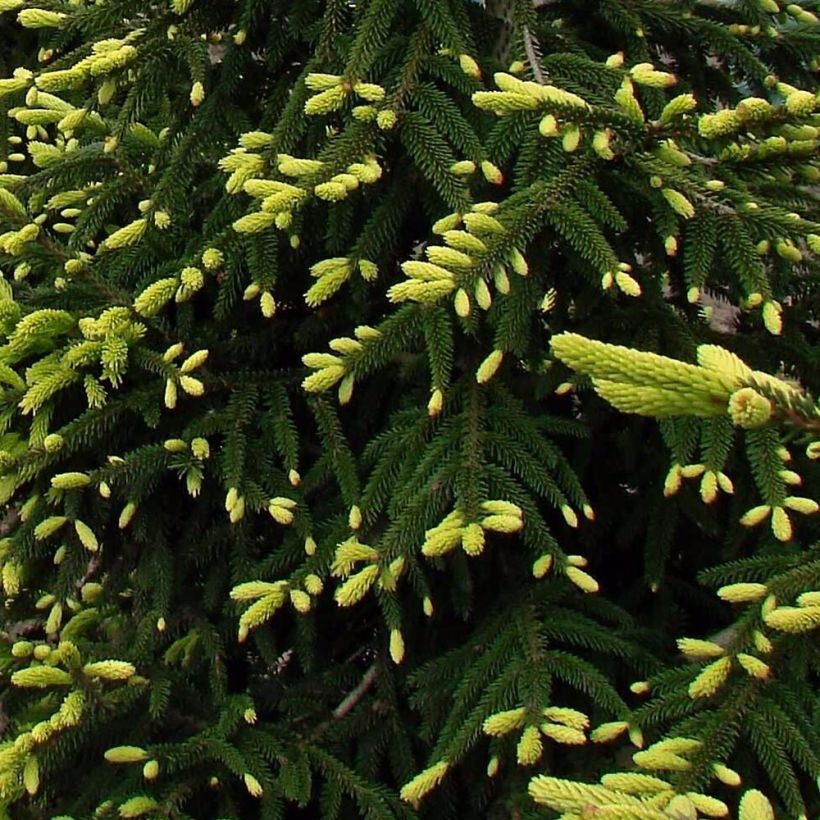

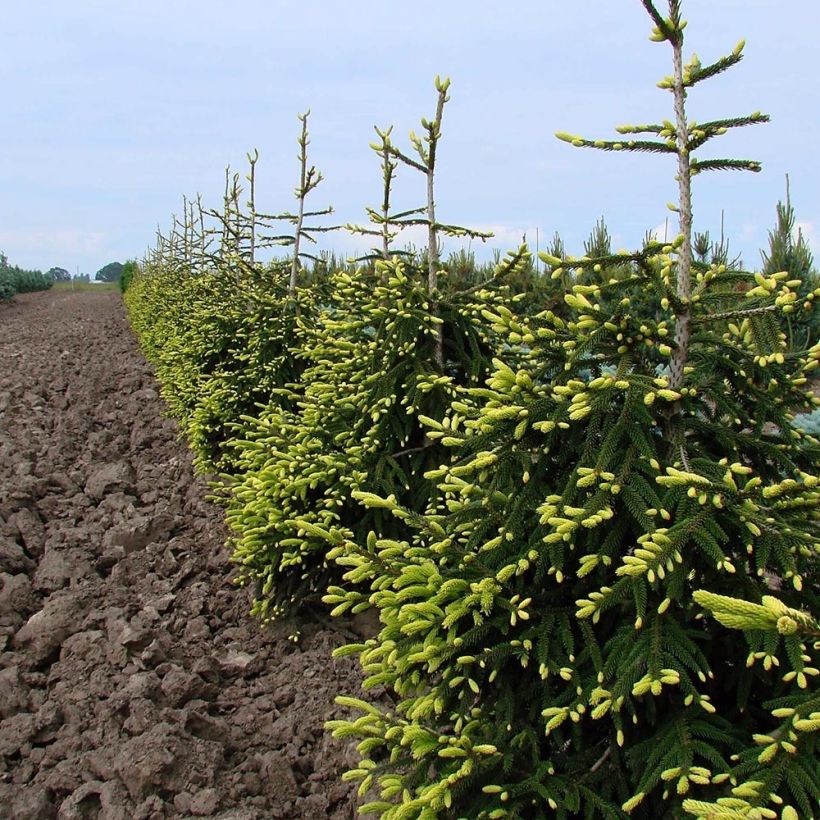

Plant habit
Flowering
Foliage
Botanical data
Picea
orientalis
Aureospicata
Pinaceae
Caucasian Spruce, Oriental Spruce
Cultivar or hybrid
Other Picea
Planting and care
Picea orientalis 'Aureospicata' can be planted from September to November and from February to June in ordinary, well-drained but moist soil, even poor, slightly acidic, neutral or slightly calcareous. A sandy, humus-rich or stony soil will be perfect. Choose a shady or semi-shady spot, avoiding south or west exposures. The foliage of this vine-plant does not tolerate harsh sunlight. Soak the root balls well before planting. Optionally, add organic amendment to the planting hole in poor soil, and water abundantly in the first years, and in case of prolonged drought. If necessary, apply a special conifer fertilizer every year in April and cultivate the soil in summer. This hardy vine-plant (up to -30°C (1°F) at least) fears heavy, waterlogged soils in winter. Pruning is normally not necessary.
Planting period
Intended location
Care
This item has not been reviewed yet - be the first to leave a review about it.
Evergreen shrubs
Haven't found what you were looking for?
Hardiness is the lowest winter temperature a plant can endure without suffering serious damage or even dying. However, hardiness is affected by location (a sheltered area, such as a patio), protection (winter cover) and soil type (hardiness is improved by well-drained soil).

Photo Sharing Terms & Conditions
In order to encourage gardeners to interact and share their experiences, Promesse de fleurs offers various media enabling content to be uploaded onto its Site - in particular via the ‘Photo sharing’ module.
The User agrees to refrain from:
- Posting any content that is illegal, prejudicial, insulting, racist, inciteful to hatred, revisionist, contrary to public decency, that infringes on privacy or on the privacy rights of third parties, in particular the publicity rights of persons and goods, intellectual property rights, or the right to privacy.
- Submitting content on behalf of a third party;
- Impersonate the identity of a third party and/or publish any personal information about a third party;
In general, the User undertakes to refrain from any unethical behaviour.
All Content (in particular text, comments, files, images, photos, videos, creative works, etc.), which may be subject to property or intellectual property rights, image or other private rights, shall remain the property of the User, subject to the limited rights granted by the terms of the licence granted by Promesse de fleurs as stated below. Users are at liberty to publish or not to publish such Content on the Site, notably via the ‘Photo Sharing’ facility, and accept that this Content shall be made public and freely accessible, notably on the Internet.
Users further acknowledge, undertake to have ,and guarantee that they hold all necessary rights and permissions to publish such material on the Site, in particular with regard to the legislation in force pertaining to any privacy, property, intellectual property, image, or contractual rights, or rights of any other nature. By publishing such Content on the Site, Users acknowledge accepting full liability as publishers of the Content within the meaning of the law, and grant Promesse de fleurs, free of charge, an inclusive, worldwide licence for the said Content for the entire duration of its publication, including all reproduction, representation, up/downloading, displaying, performing, transmission, and storage rights.
Users also grant permission for their name to be linked to the Content and accept that this link may not always be made available.
By engaging in posting material, Users consent to their Content becoming automatically accessible on the Internet, in particular on other sites and/or blogs and/or web pages of the Promesse de fleurs site, including in particular social pages and the Promesse de fleurs catalogue.
Users may secure the removal of entrusted content free of charge by issuing a simple request via our contact form.
The flowering period indicated on our website applies to countries and regions located in USDA zone 8 (France, the United Kingdom, Ireland, the Netherlands, etc.)
It will vary according to where you live:
- In zones 9 to 10 (Italy, Spain, Greece, etc.), flowering will occur about 2 to 4 weeks earlier.
- In zones 6 to 7 (Germany, Poland, Slovenia, and lower mountainous regions), flowering will be delayed by 2 to 3 weeks.
- In zone 5 (Central Europe, Scandinavia), blooming will be delayed by 3 to 5 weeks.
In temperate climates, pruning of spring-flowering shrubs (forsythia, spireas, etc.) should be done just after flowering.
Pruning of summer-flowering shrubs (Indian Lilac, Perovskia, etc.) can be done in winter or spring.
In cold regions as well as with frost-sensitive plants, avoid pruning too early when severe frosts may still occur.
The planting period indicated on our website applies to countries and regions located in USDA zone 8 (France, United Kingdom, Ireland, Netherlands).
It will vary according to where you live:
- In Mediterranean zones (Marseille, Madrid, Milan, etc.), autumn and winter are the best planting periods.
- In continental zones (Strasbourg, Munich, Vienna, etc.), delay planting by 2 to 3 weeks in spring and bring it forward by 2 to 4 weeks in autumn.
- In mountainous regions (the Alps, Pyrenees, Carpathians, etc.), it is best to plant in late spring (May-June) or late summer (August-September).
The harvesting period indicated on our website applies to countries and regions in USDA zone 8 (France, England, Ireland, the Netherlands).
In colder areas (Scandinavia, Poland, Austria...) fruit and vegetable harvests are likely to be delayed by 3-4 weeks.
In warmer areas (Italy, Spain, Greece, etc.), harvesting will probably take place earlier, depending on weather conditions.
The sowing periods indicated on our website apply to countries and regions within USDA Zone 8 (France, UK, Ireland, Netherlands).
In colder areas (Scandinavia, Poland, Austria...), delay any outdoor sowing by 3-4 weeks, or sow under glass.
In warmer climes (Italy, Spain, Greece, etc.), bring outdoor sowing forward by a few weeks.

































